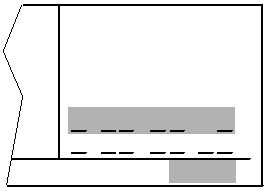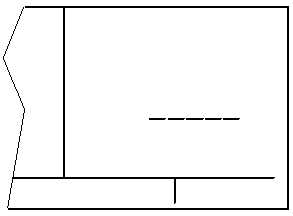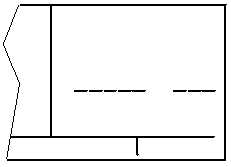TM 1-1510-225-10
3D-29
FARM
o . ’
o
. ‘
CRSR
Figure 3D-29. User-Defined Airport Waypoint Page
The cursor will be over the dashed latitude field.
The latitude and longitude of the waypoint must be
entered. Turn the right inner knob to display an N or
an S and select the latitude in degrees, minutes, and
hundredths of a minute by using the right inner and
outer knobs. When the complete latitude has been
selected, press the ENT button. The cursor will move
down to the longitude field. Turn the right inner knob
to select E or W. Use the right inner and outer knobs
to select the longitude. Press the ENT button to
approve the waypoint position.
7. Turn the right inner knob one step
clockwise to display the APT 2 page as
illustrated in Figure 3D-30. To enter an
airport elevation, press the right CRSR
button and rotate the right outer knob to
position the cursor over the dashes to the
right of ELV. Use the right inner and outer
knobs to enter the elevation. Press the
ENT button to store the elevation. Press
the right CRSR button to turn off the
cursor.
FARM
ELV FT
APT 2
Figure 3D-30. APT 2, User-Defined Airport
Waypoint Page
8. Turn the right inner knob one step
clockwise to display the APT 3 page.
Refer to Figure 3D-31. To enter a runway
length, press the right CRSR button and
rotate the right outer knob to position the
cursor over the five dashes directly
beneath RWY LEN. Use the right inner
knob to select each individual digit and the
right outer knob to position the cursor until
the entire runway length is selected.
Press the ENT button to approve the
runway length. The cursor will move to
the surface position. Turn the right inner
knob to select either HRD or SFT. Press
ENT to approve the runway surface.
Press the right CRSR button to turn off the
cursor function.
FARM
RWY LEN
‘
APT 3
Figure 3D-31. APT 3, User-Defined Airport
Waypoint Page
Airport remarks may be stored on the APT 5
page.
b. Creating a User-Defined VOR Waypoint. A
user-defined VOR waypoint must contain an identifier,
magnetic variation, latitude, and longitude. The
magnetic variation may be manually entered or, if one
is not entered, one will automatically be calculated and
stored. A VOR frequency may be stored. The
procedure for creating a user-defined VOR waypoint is
similar to that just described for creating a user-
defined airport waypoint. Begin by selecting the VOR
waypoint pages. The VOR identifier can be one to
three characters in length. A user-defined VOR
waypoint page contains the user identifier at the top of
the page and three lines of dashes. The top line of
dashes may be filled in with frequency and magnetic
variation. The second line is for latitude and the third
line is for longitude. A user-defined VOR is stored as
an Undefined (U) class. Refer to Figure 3D-32.





